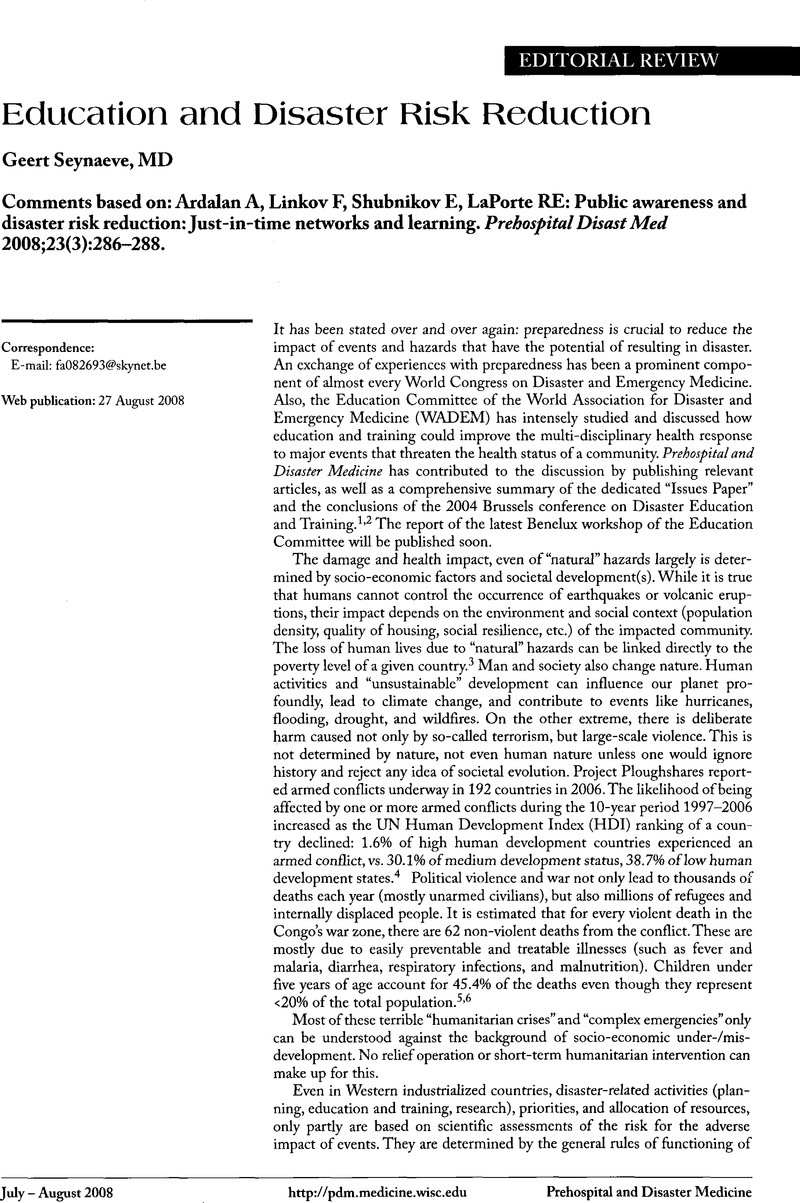Crossref Citations
This article has been cited by the following publications. This list is generated based on data provided by Crossref.
Papier, Arthur
and
Veenema, Tener Goodwin
2005.
Clinical Decision Support for Visual Diagnosis.
Prehospital and Disaster Medicine,
Vol. 20,
Issue. S1,
p.
93.
Yang, Yingyun
Chen, Yanwen
Chotani, Rashid A.
LaPorte, Ronald E.
Ardalan, Ali
Shubnikov, Eugene
Linkov, Faina
and
Huang, Jesse
2010.
Chinese Disasters and Just-in-Time Education.
Prehospital and Disaster Medicine,
Vol. 25,
Issue. 5,
p.
477.
Krämer, P.
Aul, A.
Vock, B.
and
Frank, C.
2010.
Notfallmanagement im Schienenbereich des öffentlichen Verkehrsnetzes.
Der Anaesthesist,
Vol. 59,
Issue. 11,
p.
1021.
Liapis, Aggelos
Kostaridis, Antonis
Ramfos, Antonis
Hall, Ian
DeGaetano, Andrea
Koutras, Nickolaos
Dobrinkova, Nina
Leventakis, George
Olunczek, Andrej
Seynaeve, Geert
and
Boustras, George
2015.
Information Systems for Crisis Response and Management in Mediterranean Countries.
Vol. 233,
Issue. ,
p.
205.



